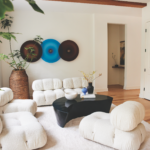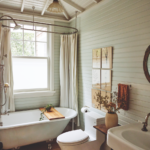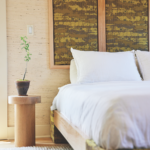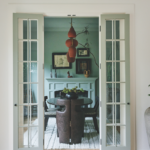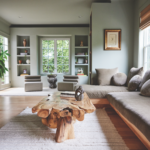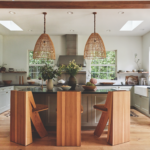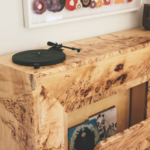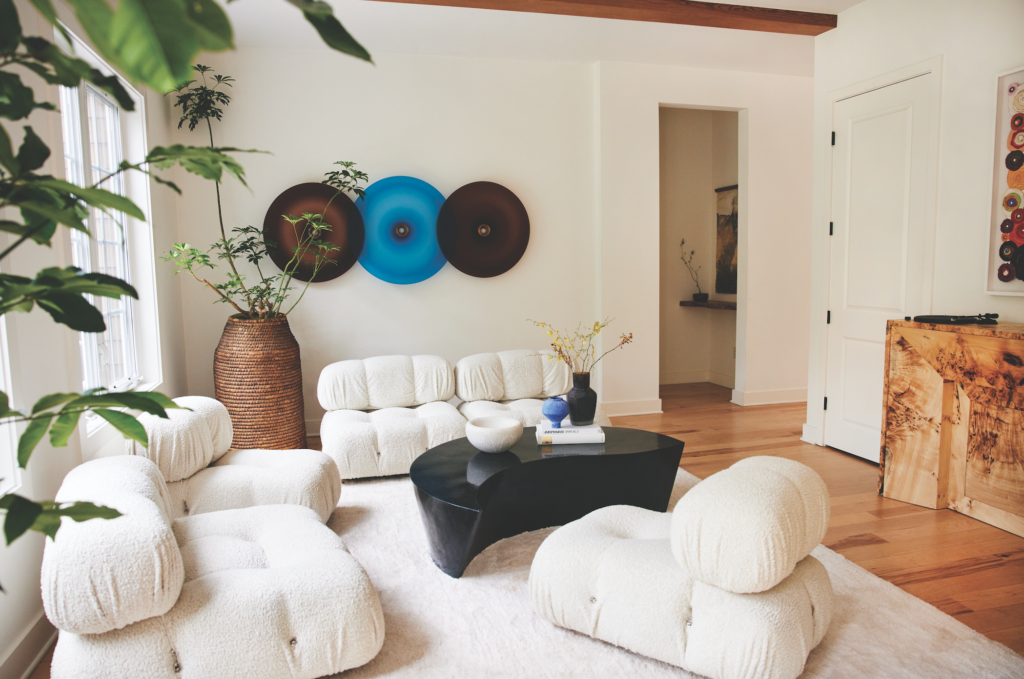Mi Casa, Su Caso
Author:Lindsey ShookKatrina Caso curates an inspiring Malibu dwelling for a talented songbird
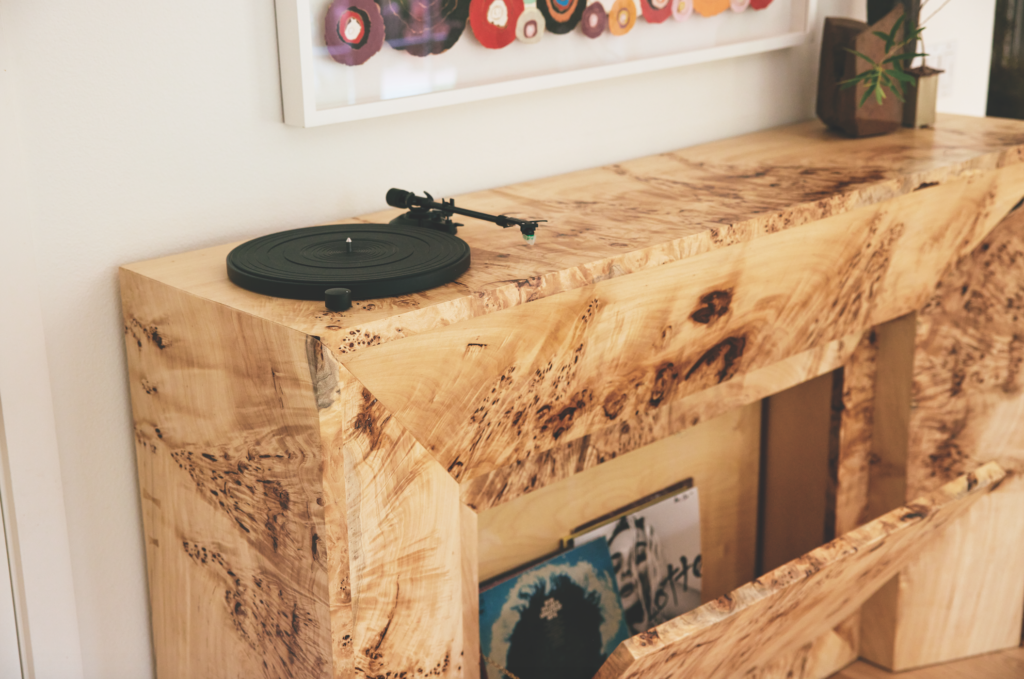
When she’s not penning pop hits—including “Stronger (What Doesn’t Kill You)”—songwriter Ali Tamposi spends her time on the water, perfecting her surf skills. So it wasn’t a complete surprise when she moved to a Cape Cod–style cottage in a private enclave on Point Dume in Malibu that offered easy access to the ocean. She tapped interior designer Katrina Caso, who’d overseen the overhaul of her previous home—a Los Feliz Mediterranean—to transform her new abode. “We work well together,” says Caso.
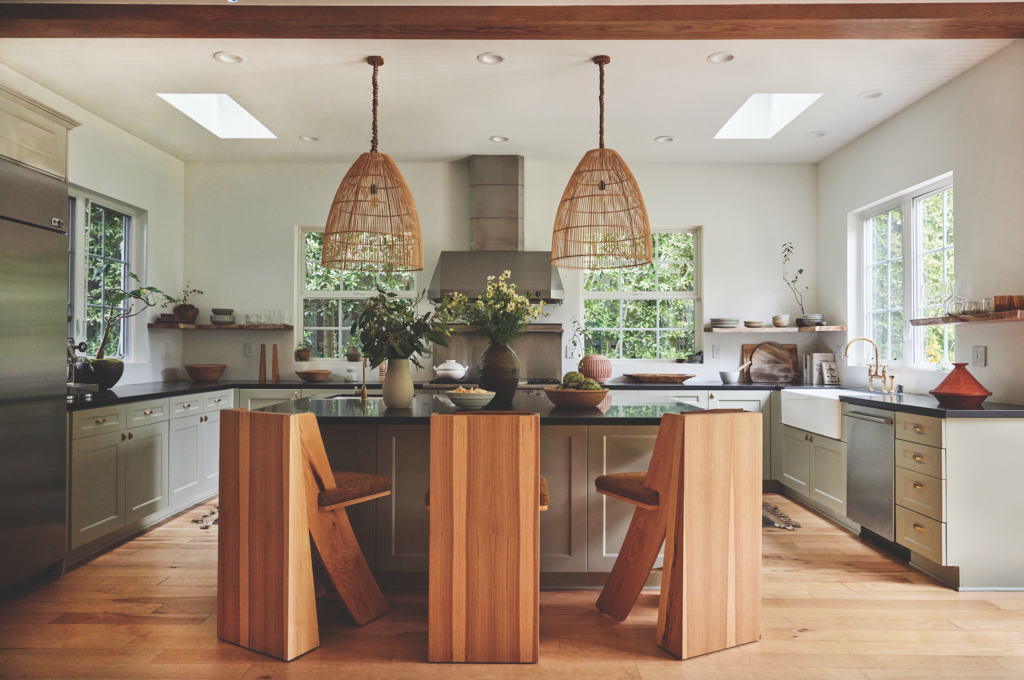
The interior designer remembers her first impression of the house. “It was crazy. Red and blue and all sorts of colors,” she recalls. She stripped the house down to reveal its original, hand-crafted details: hickory wood flooring and beams, multi-paned windows, baseboard moldings and, in one of the bathrooms, a tongue-and-groove ceiling. “She’s putting down roots here so she wanted the house to feel laid-back and uncomplicated,” Caso notes. “I was looking for earthiness and airiness.”
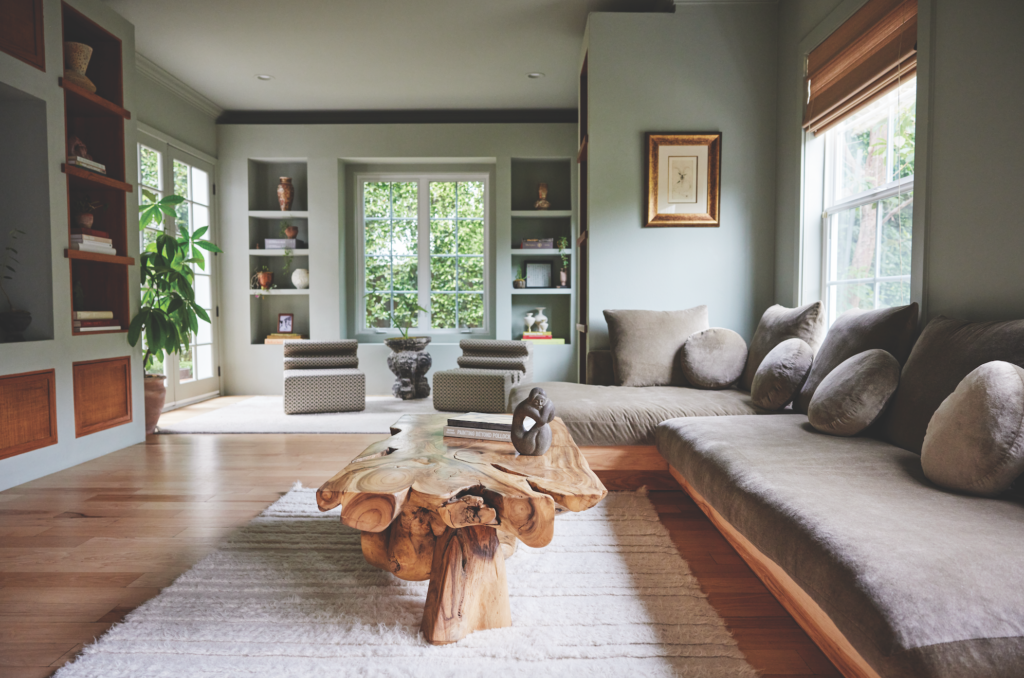
Caso chalks up the sense of calm that characterizes her work—what Tamposi describes as “Europe
meets California”—to her Bahamian upbringing. “I don’t like a visual jolt or anything that messes with the senses,” she says. Somehow, in her hands, bold juxtapositions—like the kitchen’s union of blocky Alexander Calder–inspired hickory stools and delicate basket lights or the unexpected brightness of the apricot ceramic pendant that dangles above the dark wood dining table—seem like natural allies.
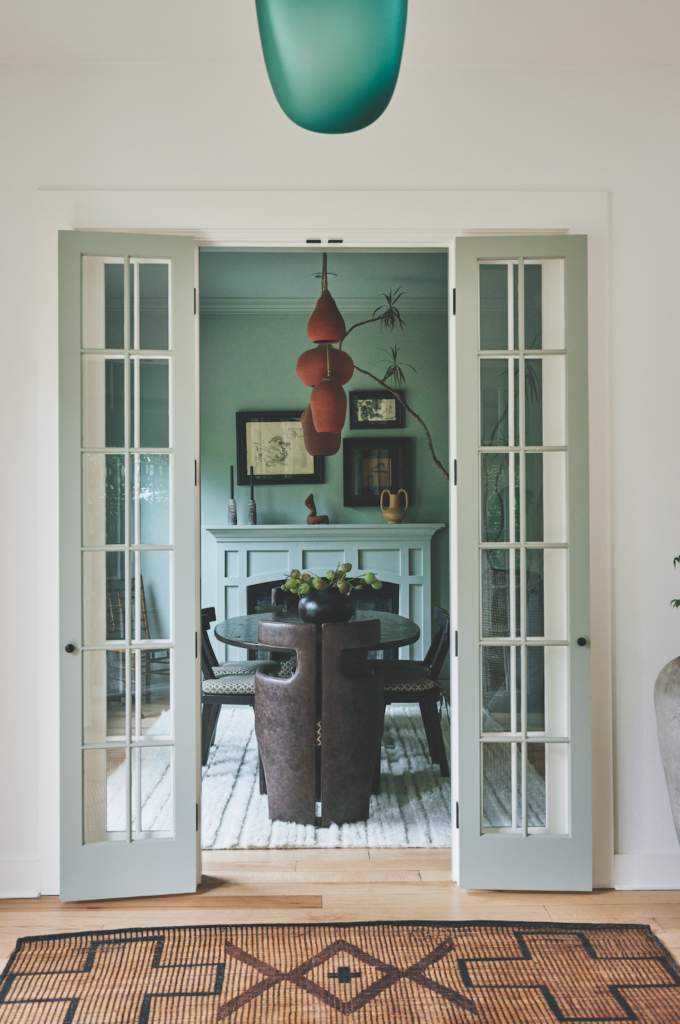
While Tamposi wanted the house to feel beachy, she shied away from anything that felt too spot on. “The idea was that it would feel like walking into misty ocean air,” she says. Thus Caso chose colors—verdigris, rust, turquoise, cream and caramel—that, like sea glass, seemed aged by the water. Their grayed tones imbue the home with tranquility. “If you’re having one of those days, you just come in here and it all goes away,” says Caso of the gentle green that permeates the family room.
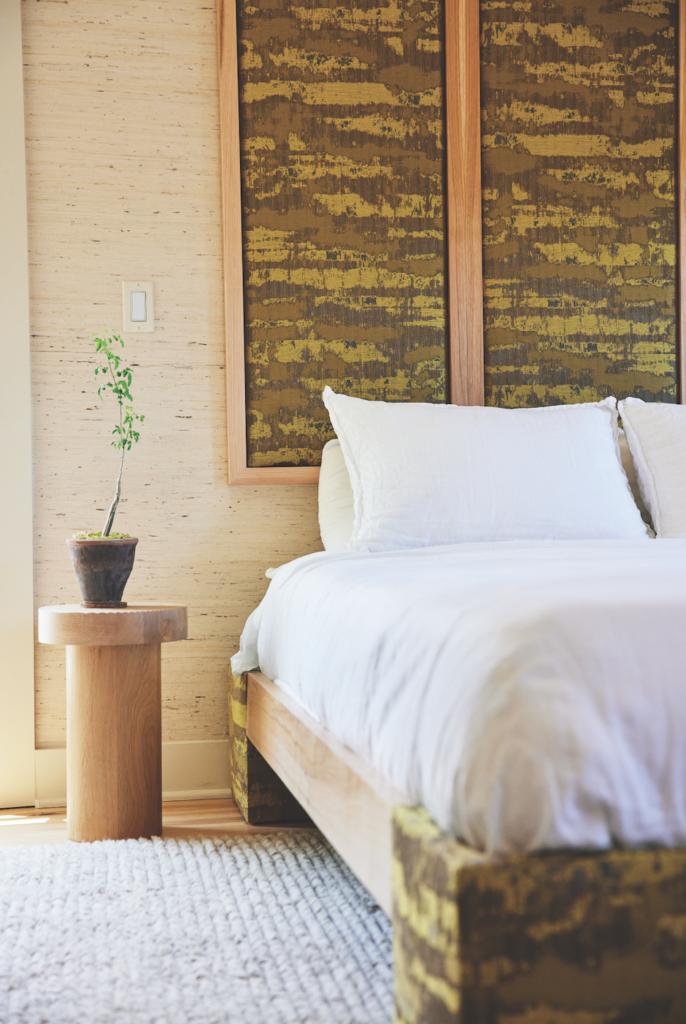
Much of the home’s furniture was designed by Caso. “I like to play,” she laughs. In addition to those kitchen chairs, she created the sculptural head chairs in the dining room, that room’s table, the family room’s sofa and, holding pride of place in the living room, an arresting integrated stereo console, carved from dramatic burled mappa wood as well as a large custom sconce designed in collaboration with Jeremy Maxwell Wintrebert. Vintage pieces, from the Olavi Hanninen side chairs in the dining room to the family room’s gnarled wood coffee table and Liisi Beckmann Karelia chairs, settle instant warmth over the space. That list includes the bathroom fixtures. “I thought there was something charming about keeping it what it should be,” she explains. The result is a space that looks original to a home built during the second decade of the last century.
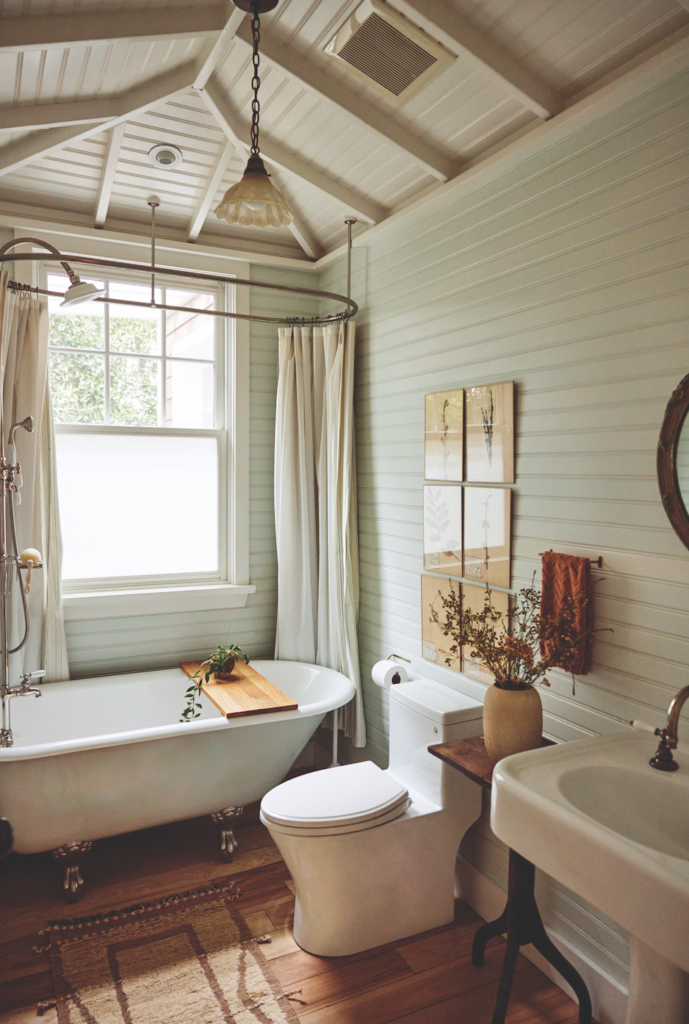
Caso’s working title for this house was Harvest Moon (after the Neil Young song). “For me, the song evokes tenderness,” she explains. “There’s something pure about it that reminded me of Ali—those are qualities she shares with everyone she meets.”
